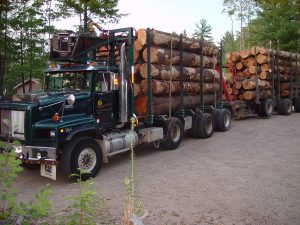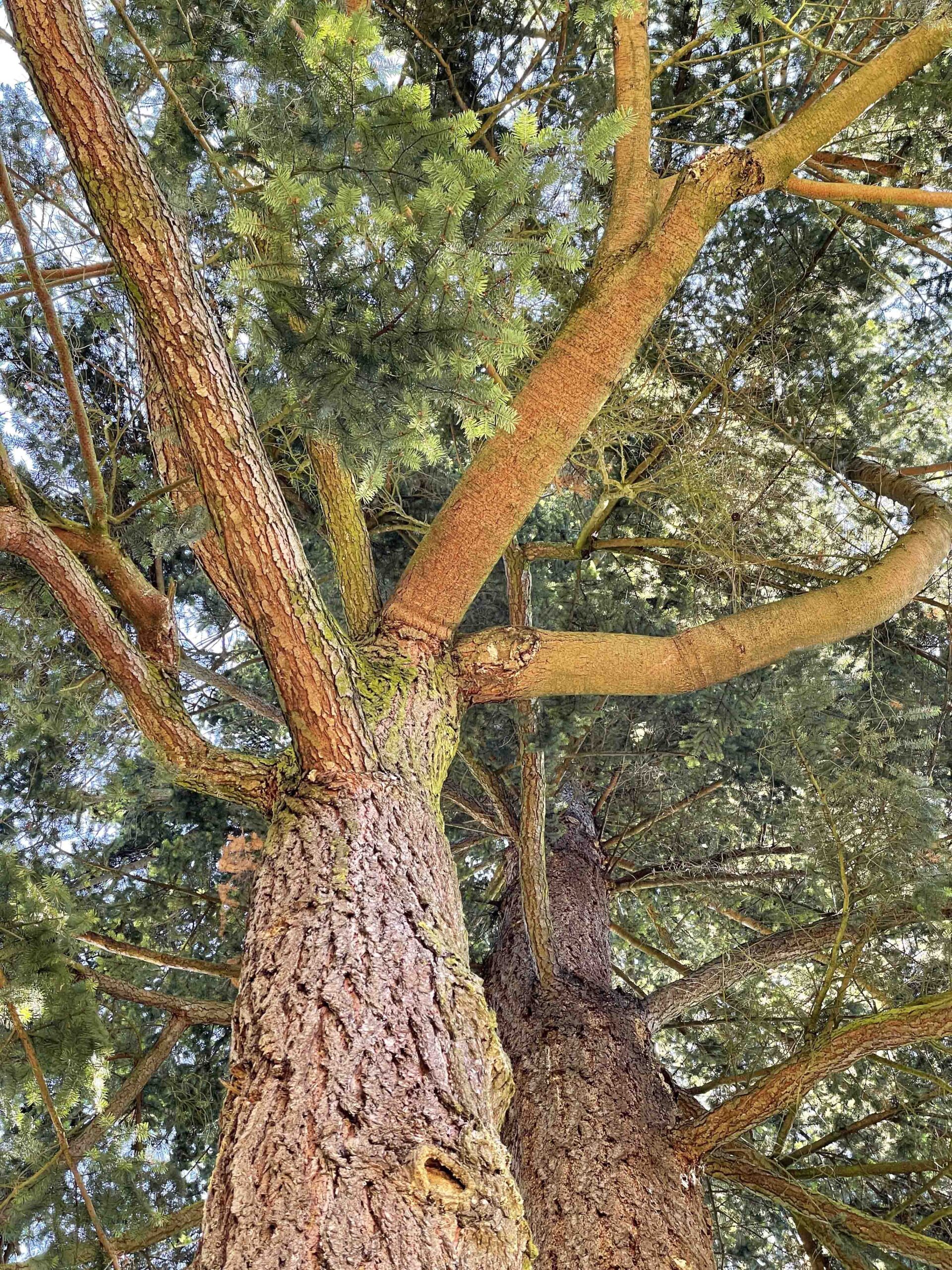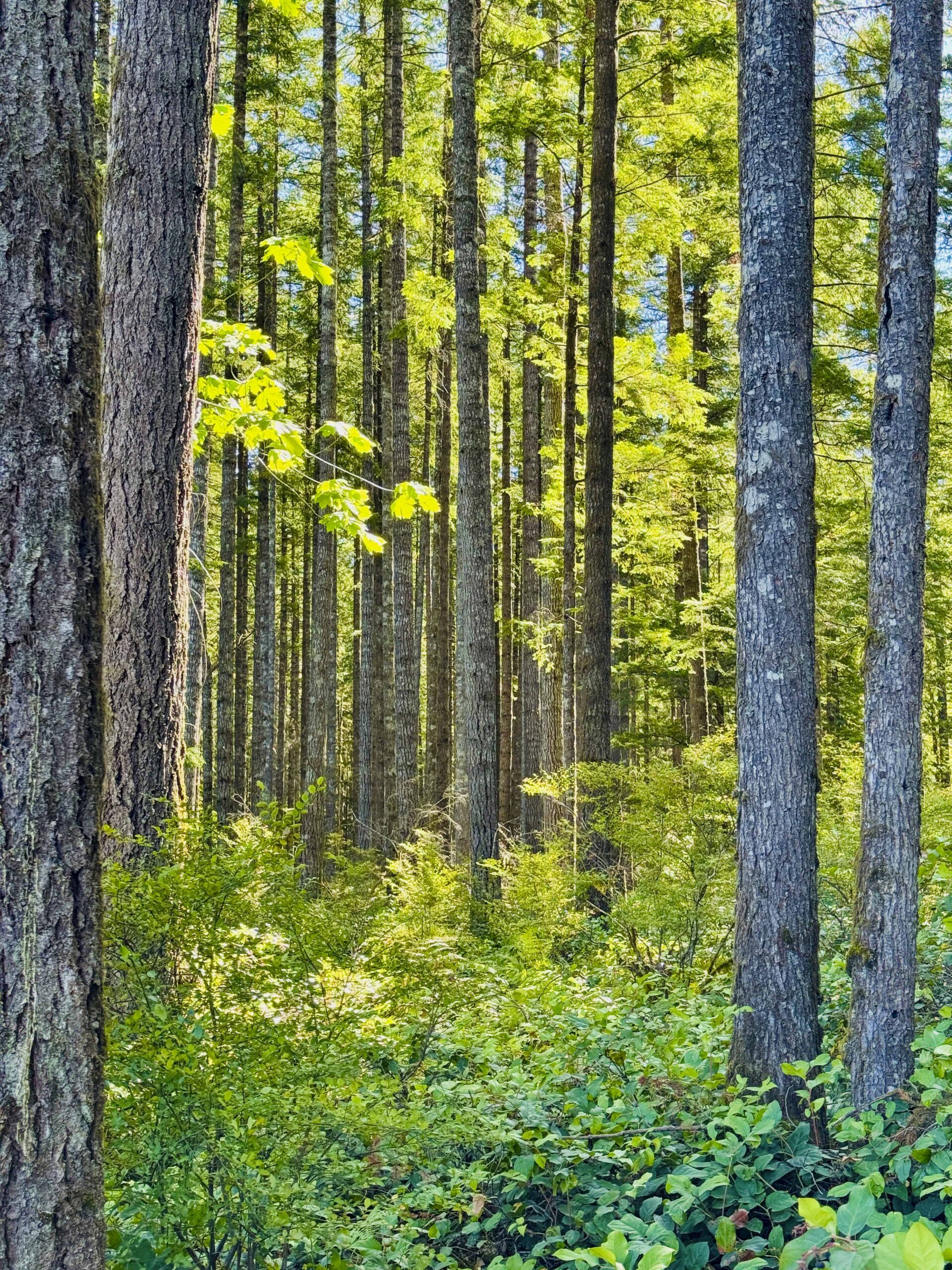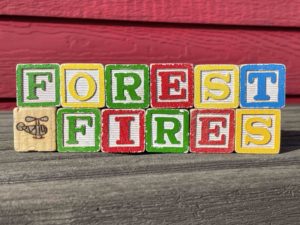
Trump signals furniture tariffs are coming in 50 days—referring to US Section 232 investigation on timber, lumber and wood products. In related news; BC’s forest industry fears additional forest product tariffs; and an economist says lumber tariffs undermine Canada’s capacity to invest in forest management. In other Business news: SFPA welcomes EU recognition that US poses negligible risk under EU’s Deforestation Regulation; Interfor defers its plan to spray glyphosate in Ontario; a BC MLA speaks to inaction on forestry; the labour dispute at closed Galloway, BC mill continues; Maine falls behind on the CLT front; and the US Fed signals rates cuts are coming.
In Forestry/Wildfire news: UBC’s Lori Daniels says Port Alberni fire is a harbinger of things to come on the BC coast; wildfires prompt evacuations north of Hope, BC; in Annapolis County, Nova Scotia; and central Oregon and California. Meanwhile: BC hunting lodge loses logging appeal; and Woodlots BC announced its 2025 Conference & AGM dates.
Finally, Wisconsin researchers listen to forests to learn about protecting them.
Kelly McCloskey, Tree Frog News Editor
 BC’s forestry sector is awaiting the results of a US Commerce Department investigation into the imports of wood products, which could impose further tariffs on the beleaguered industry. It comes months after US President Trump launched a Section 232 investigation into whether importing timber, lumber and derivative products could pose a national security threat to the US. …”Lumber is just one of many sectors that could get impacted … maybe lumber gets a lower tariff, but plywood and OSB and pulp get a higher tariff. We don’t know,” said Russ Taylor. …Taylor says that, while the Section 232 tariffs could cause further mill curtailments in BC, the U.S. forestry industry doesn’t yet have the capacity to fill the void. …”And the US mills will be very happy to raise their price … at a discount to the Canadian price because that’s just free money in the short term for them,” he added.
BC’s forestry sector is awaiting the results of a US Commerce Department investigation into the imports of wood products, which could impose further tariffs on the beleaguered industry. It comes months after US President Trump launched a Section 232 investigation into whether importing timber, lumber and derivative products could pose a national security threat to the US. …”Lumber is just one of many sectors that could get impacted … maybe lumber gets a lower tariff, but plywood and OSB and pulp get a higher tariff. We don’t know,” said Russ Taylor. …Taylor says that, while the Section 232 tariffs could cause further mill curtailments in BC, the U.S. forestry industry doesn’t yet have the capacity to fill the void. …”And the US mills will be very happy to raise their price … at a discount to the Canadian price because that’s just free money in the short term for them,” he added.  JAFFRAY, BC — The BC Labour Relations Board has dismissed an application from unionized employees with Galloway Lumber Company seeking a court order against the employer in a labour dispute over a negotiated severance agreement due to the permanent closure of the Galloway sawmill, near Jaffray. While the labour board dismissed the application on Aug. 14, vice-chair Carmen Hamilton deferred the matter to the parties’ negotiated dispute resolution process. Meanwhile, both sides are have agreed to bring the matter before an arbitrator who is not available until January 2026. “At its heart, this matter is a contract interpretation dispute,” wrote Hamilton. The United Steelworkers Local L-405 is seeking roughly $1.2 million in severance that was negotiated as part of an adjustment plan that was negotiated following the closure of the mill.
JAFFRAY, BC — The BC Labour Relations Board has dismissed an application from unionized employees with Galloway Lumber Company seeking a court order against the employer in a labour dispute over a negotiated severance agreement due to the permanent closure of the Galloway sawmill, near Jaffray. While the labour board dismissed the application on Aug. 14, vice-chair Carmen Hamilton deferred the matter to the parties’ negotiated dispute resolution process. Meanwhile, both sides are have agreed to bring the matter before an arbitrator who is not available until January 2026. “At its heart, this matter is a contract interpretation dispute,” wrote Hamilton. The United Steelworkers Local L-405 is seeking roughly $1.2 million in severance that was negotiated as part of an adjustment plan that was negotiated following the closure of the mill.
 We welcome the recent announcement from the White House regarding the US–EU Framework Agreement on Reciprocal, Fair, and Balanced Trade. Notably, the European Union has committed to addressing U.S. concerns about the EUDR, acknowledging that US commodity production poses negligible risk to global deforestation. This recognition is a positive step toward ensuring Southern Pine lumber producers and exporters are not unfairly burdened by regulations that fail to account for the sustainability and stewardship practices already in place within the American forestry sector. …The EUDR’s stringent traceability requirements (such as geolocation data for every plot of land from which timber is sourced) present serious compliance obstacles for U.S. producers. …Recognizing the broad impact of the EUDR across multiple agricultural sectors, the forest products industry is strategically voicing its objections through official trade and commerce channels.
We welcome the recent announcement from the White House regarding the US–EU Framework Agreement on Reciprocal, Fair, and Balanced Trade. Notably, the European Union has committed to addressing U.S. concerns about the EUDR, acknowledging that US commodity production poses negligible risk to global deforestation. This recognition is a positive step toward ensuring Southern Pine lumber producers and exporters are not unfairly burdened by regulations that fail to account for the sustainability and stewardship practices already in place within the American forestry sector. …The EUDR’s stringent traceability requirements (such as geolocation data for every plot of land from which timber is sourced) present serious compliance obstacles for U.S. producers. …Recognizing the broad impact of the EUDR across multiple agricultural sectors, the forest products industry is strategically voicing its objections through official trade and commerce channels. President Donald Trump on Friday announced he’s directing his administration to investigate imports of furniture into the United States that will lead to higher tariffs by October. “Within the next 50 days, that Investigation will be completed, and Furniture coming from other Countries into the United States will be Tariffed at a Rate yet to be determined,” Trump wrote. “This will bring the Furniture Business back to North Carolina, South Carolina, Michigan, and States all across the Union,” Trump said. …Already, furniture prices have been increasing over the past few months as Trump hiked tariffs on countries including China and Vietnam, the top two sources of imported furniture. Both countries imported $12 billion worth of furniture and fixtures last year, according to US Commerce Department data. …Furniture stocks, such as Wayfair, William-Sonoma and Restoration Hardware, all tanked in after-hours trading Friday.
President Donald Trump on Friday announced he’s directing his administration to investigate imports of furniture into the United States that will lead to higher tariffs by October. “Within the next 50 days, that Investigation will be completed, and Furniture coming from other Countries into the United States will be Tariffed at a Rate yet to be determined,” Trump wrote. “This will bring the Furniture Business back to North Carolina, South Carolina, Michigan, and States all across the Union,” Trump said. …Already, furniture prices have been increasing over the past few months as Trump hiked tariffs on countries including China and Vietnam, the top two sources of imported furniture. Both countries imported $12 billion worth of furniture and fixtures last year, according to US Commerce Department data. …Furniture stocks, such as Wayfair, William-Sonoma and Restoration Hardware, all tanked in after-hours trading Friday.
 When Millard Dority came out of retirement to oversee the expansion of Jesup Memorial Library, he had one goal: to prove that Maine could produce its own cross-laminated timber. Instead, he uncovered a glaring hole in the state’s forest economy. …But with no CLT factories in Maine, the wood had to be trucked from New England to Illinois for processing, then hauled back to Bar Harbor—a headache in a state blanketed by forests. …The Jesup Library expansion is one of just 27 CLT projects in Maine, using spruce-pine-fir and eastern hemlock from New England. Forestry expert Andy Fast said these underused species are finding new life through CLT, but warned, “Supply chain efficiencies will determine whether it’s a viable product longer term.” Despite interest, Maine has failed to land a CLT manufacturer. LignaTerra Global and SmartLam both announced plans in 2018, only to back out. [to access the full story a Bangor Daily News subscription is required].
When Millard Dority came out of retirement to oversee the expansion of Jesup Memorial Library, he had one goal: to prove that Maine could produce its own cross-laminated timber. Instead, he uncovered a glaring hole in the state’s forest economy. …But with no CLT factories in Maine, the wood had to be trucked from New England to Illinois for processing, then hauled back to Bar Harbor—a headache in a state blanketed by forests. …The Jesup Library expansion is one of just 27 CLT projects in Maine, using spruce-pine-fir and eastern hemlock from New England. Forestry expert Andy Fast said these underused species are finding new life through CLT, but warned, “Supply chain efficiencies will determine whether it’s a viable product longer term.” Despite interest, Maine has failed to land a CLT manufacturer. LignaTerra Global and SmartLam both announced plans in 2018, only to back out. [to access the full story a Bangor Daily News subscription is required]. Canada’s forests are burning. …Smoke from these fires has degraded air quality across Canada and the US. The situation has led some US policymakers to publicly blame Canada for failing to manage wildfires and to demand more active forest management. These critiques are hypocritical, given their record of climate change denial. …Yet beyond partisan politics, the US continues to impose tariffs on Canadian lumber, undermining our capacity to invest in stronger forest management. …Eliminating or reducing US tariffs would instantly raise the value of Canada’s standing forest stock, sending a price signal that makes forestry activity viable in regions that are currently too remote or costly to harvest. At the margin, higher returns would unlock investment in better forest management, including areas that are now left untouched because they are uneconomic to service. …Lifting tariffs would be the first step, but it would not be a cure-all.
Canada’s forests are burning. …Smoke from these fires has degraded air quality across Canada and the US. The situation has led some US policymakers to publicly blame Canada for failing to manage wildfires and to demand more active forest management. These critiques are hypocritical, given their record of climate change denial. …Yet beyond partisan politics, the US continues to impose tariffs on Canadian lumber, undermining our capacity to invest in stronger forest management. …Eliminating or reducing US tariffs would instantly raise the value of Canada’s standing forest stock, sending a price signal that makes forestry activity viable in regions that are currently too remote or costly to harvest. At the margin, higher returns would unlock investment in better forest management, including areas that are now left untouched because they are uneconomic to service. …Lifting tariffs would be the first step, but it would not be a cure-all. 
 Peter Constabel, a professor in the biology department at the University of Victoria said that several years of repeated drought in B.C. mixed with heat stress has increased the likelihood of branches breaking off, it could even happen on a “perfectly calm day” without any breeze. The consequences can be tragic. Constabel, who specializes in tree health said, “it’s the drought that specifically causes this, and somehow it stresses the tree and drops the branch, or the branch falls. If you get cumulative droughts, of course, it weakens the tree overall”. …Dry spells can leave trees in a weakened state, Simon Fraser University biological sciences professor Jim Mattsson said, reducing photosynthesis and growth, cutting their energy or sugar reserves, and lowering production of chemical defences. All of these can cause a chain reaction increasing trees’ susceptibility to insects and fungal diseases, causing trees to rot inside, weaken and potentially topple over.
Peter Constabel, a professor in the biology department at the University of Victoria said that several years of repeated drought in B.C. mixed with heat stress has increased the likelihood of branches breaking off, it could even happen on a “perfectly calm day” without any breeze. The consequences can be tragic. Constabel, who specializes in tree health said, “it’s the drought that specifically causes this, and somehow it stresses the tree and drops the branch, or the branch falls. If you get cumulative droughts, of course, it weakens the tree overall”. …Dry spells can leave trees in a weakened state, Simon Fraser University biological sciences professor Jim Mattsson said, reducing photosynthesis and growth, cutting their energy or sugar reserves, and lowering production of chemical defences. All of these can cause a chain reaction increasing trees’ susceptibility to insects and fungal diseases, causing trees to rot inside, weaken and potentially topple over.
 In the Summer Almanac you’ll find these headlines and much more:
In the Summer Almanac you’ll find these headlines and much more: The Forest Appeals Commission dismissed a Vanderhoof hunting and fishing lodge’s appeal of a $25,000 fine for cutting Crown timber without a licence. In an Aug. 13 decision, panel chair Maureen Baird upheld the March 2023 fine against Crystal Lake Resort Ltd. by the Ministry of Forests. Daniel Brooks, whose family bought the resort in 1975, admitted trees were cut without a licence in July 2020 on a right of way and the company asked, after the fact, for the Ministry of Forests to authorize the removal of merchantable timber. The ministry advised the company that it needed to have a licence to harvest in the first place. Brooks said he did not know he needed a licence. …The Ministry approved the required management plan, that allowed cutting trees if the resort had a forestry licence to do so.
The Forest Appeals Commission dismissed a Vanderhoof hunting and fishing lodge’s appeal of a $25,000 fine for cutting Crown timber without a licence. In an Aug. 13 decision, panel chair Maureen Baird upheld the March 2023 fine against Crystal Lake Resort Ltd. by the Ministry of Forests. Daniel Brooks, whose family bought the resort in 1975, admitted trees were cut without a licence in July 2020 on a right of way and the company asked, after the fact, for the Ministry of Forests to authorize the removal of merchantable timber. The ministry advised the company that it needed to have a licence to harvest in the first place. Brooks said he did not know he needed a licence. …The Ministry approved the required management plan, that allowed cutting trees if the resort had a forestry licence to do so.

 Interfor says it won’t proceed with its plan to spray forests in northern Ontario with a herbicide critics say is harmful. While the province said it was safe, First Nations and some municipalities were opposed to the plan to spray glyphosate over Crown land near Elliot Lake, Blind River, Espanola and other forest management areas in the north. Andrew Horahan, executive vice-president of Interfor’s Canadian operations, confirmed it won’t be conducting the aerial spray of the herbicide, at least for now. “Interfor is committed to responsible forest management and to maintaining open, constructive dialogue with our stakeholders and the communities in which we operate,” Horahan said in a statement. “The use of herbicide sprays is a carefully regulated and widely accepted industry practice, overseen by relevant authorities. For 2025, Interfor has chosen not to proceed with an herbicide application in the Pineland, Spanish and Northshore forests.”
Interfor says it won’t proceed with its plan to spray forests in northern Ontario with a herbicide critics say is harmful. While the province said it was safe, First Nations and some municipalities were opposed to the plan to spray glyphosate over Crown land near Elliot Lake, Blind River, Espanola and other forest management areas in the north. Andrew Horahan, executive vice-president of Interfor’s Canadian operations, confirmed it won’t be conducting the aerial spray of the herbicide, at least for now. “Interfor is committed to responsible forest management and to maintaining open, constructive dialogue with our stakeholders and the communities in which we operate,” Horahan said in a statement. “The use of herbicide sprays is a carefully regulated and widely accepted industry practice, overseen by relevant authorities. For 2025, Interfor has chosen not to proceed with an herbicide application in the Pineland, Spanish and Northshore forests.”

 The Province of B.C. is lending its expertise to Mosaic Forest Management as it develops plans to reopen the Bamfield Main Road, sections of which were rendered unsafe due to the Mt. Underwood wildfire. “We recognize the importance of Bamfield Road to the Huu‑ay‑aht First Nation and area residents,” said Mike Farnworth, Minister of Transportation and Transit. “There is substantial work necessary … to reopen Bamfield Road. Ensuring the safety of the travelling public is the top priority, and the Province will continue to support to Mosaic throughout this process.” Initial engineering assessments have determined a section of the Bamfield Road managed by Mosaic is unsafe for all traffic, prompting Mosaic to close the route with a section of the road being defined as a No Work Zone by BC Wildfire Services. Falling rocks, dangerous trees and a fire-damaged slope are presenting exceptionally challenging conditions, and there is no timeline for reopening the road in its current configuration.
The Province of B.C. is lending its expertise to Mosaic Forest Management as it develops plans to reopen the Bamfield Main Road, sections of which were rendered unsafe due to the Mt. Underwood wildfire. “We recognize the importance of Bamfield Road to the Huu‑ay‑aht First Nation and area residents,” said Mike Farnworth, Minister of Transportation and Transit. “There is substantial work necessary … to reopen Bamfield Road. Ensuring the safety of the travelling public is the top priority, and the Province will continue to support to Mosaic throughout this process.” Initial engineering assessments have determined a section of the Bamfield Road managed by Mosaic is unsafe for all traffic, prompting Mosaic to close the route with a section of the road being defined as a No Work Zone by BC Wildfire Services. Falling rocks, dangerous trees and a fire-damaged slope are presenting exceptionally challenging conditions, and there is no timeline for reopening the road in its current configuration.
